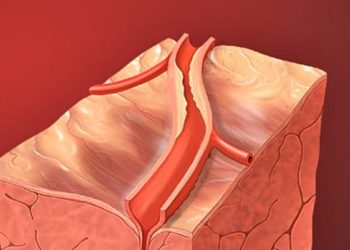[BMJ] Tranexamic acid reduces mortality in traumatic bleeding
Image: CC
Key findings:
- Tranexamic acid was found to significantly reduce all cause mortality in patients with traumatic bleeding, except in those with the lowest baseline risk of death
- Tranexamic acid was found to be associated with reduced odds of thromboembolic events in patients with traumatic bleeding
Primer: Tranexamic acid is a synthetic derivative of lysine that is used to manage or prevent excessive bleeding, by inhibiting the formation of plasmin. In the CRASH-2 trial, it was shown that a short course of tranexamic acid administered within three hours of injury to adults with traumatic bleeding reduced all-cause mortality and demonstrated no significant increase in thromboembolic risk. What is not known, however, is how the effects of tranexamic acid change with the baseline risk of death. Do patients with traumatic bleeding and a higher risk of dying at baseline experience greater benefits with tranexamic acid treatment than those with lower risk?
This [randomized] study: Published recently in BMJ, a study sought to answer this question by conducting a prespecified analysis on data collected during the CRASH-2 trial, a randomised controlled trial comparing tranexamic acid with placebo. The purpose of the study was to explore how the effects of tranexamic acid differ according to the baseline risk of death in patients suffering traumatic bleeding. Using a previously developed prognostic model, patients from the CRASH-2 trial who started treatment within three hours of injury were classified into one of four risk strata of mortality: <6%, 6-20%, 21-50%, and >50%. The effect of a specific regimen of tranexamic acid (1 g over 10 minutes, then 1 g over eight hours) on all cause mortality, deaths from bleeding, and thromboembolic events was compared with placebo in each strata.
The analysis involved 13,273 patients. Except for the lowest risk strata (i.e., <6%), tranexamic acid was associated with significantly lower odds of mortality compared to placebo. The odds ratio for deaths from all causes was 0.83 (95% CI 0.70-1.00) for the 6-20% risk of baseline mortality stratum, 0.80 (95% CI 0.69-0.94) for 21-50%, and 0.77 (95% CI 0.68-0.87) for >50%, all in favour of tranexamic acid treatment. The study also found that tranexamic acid was associated with significant reductions in the risk of fatal and non-fatal thromboembolic events (OR 0.69; 95% CI 0.53-0.89).
In sum: In patients with traumatic bleeding, reductions in all-cause mortality and deaths from bleeding did not significantly differ according to baseline risk of mortality. By using tranexamic acid, the odds of death from bleeding in each of the risk strata and odds of thromboembolic events were both reduced by approximately 30%. Thus, these data demonstrate that tranexamic acid use should not be restricted to patients with severe bleeding, though the benefit in low risk patients was not significant. The strength of the study was that the data examined were obtained from a large, randomised controlled trial with adequate allocation concealment and blinding, and low loss to follow-up. Weaknesses of the study include inaccuracy in establishing cause of death in trauma patients and inaccuracy in the diagnosis of non-fatal events.
© 2012 2minutemedicine.com. All rights reserved. No works may be reproduced without written consent from 2minutemedicine.com. DISCALIMER: Posts are not medical advice and are not intended as such. Please see a healthcare professional if you seek medical advice.




